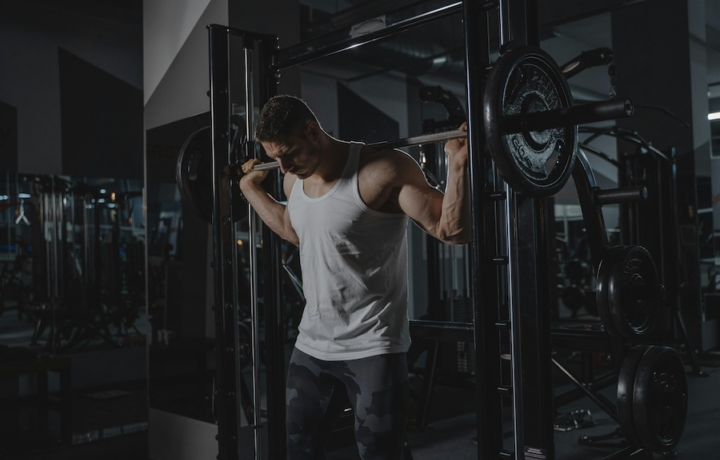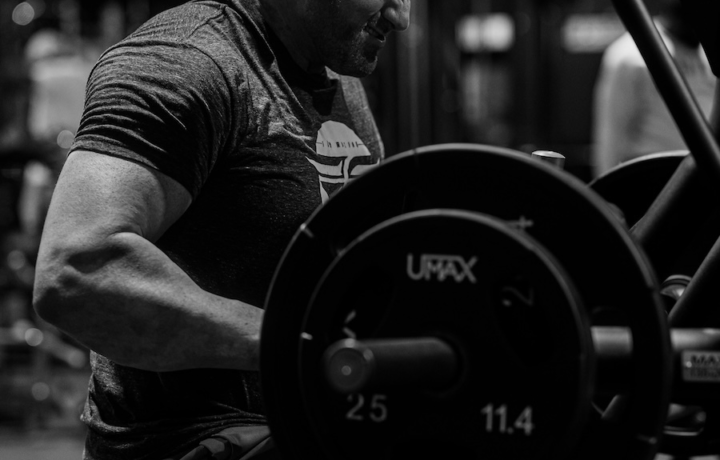Exercise
Smith Machine Calf Raise

Smith Machine Calf Raise
How to Perform
- Position yourself by placing the balls of your feet on a platform or step under the Smith machine bar, with your heels hanging off the edge.
- Stand tall and place the Smith machine bar across your upper trapezius muscles, then unhook the bar by rotating it.
- Lower your heels toward the floor by allowing your ankles to dorsiflex until you feel a stretch in your calves, keeping your knees slightly bent throughout the movement.
- Exhale as you press through the balls of your feet to raise your heels as high as possible, fully contracting your calf muscles at the top position.
- Maintain a straight back and neutral spine throughout the exercise, avoiding any forward lean or knee locking.
- Control the movement on the way down, inhaling as you lower your heels back toward the starting position.
- Keep your weight centered over the middle of your feet, avoiding shifting too far forward onto your toes or backward.
- Perform the desired number of repetitions, then carefully re-rack the bar by rotating it back into the hooks.
Important information
- Keep your core engaged throughout the exercise to maintain stability and proper form.
- Adjust the height of the platform based on your mobility—a higher platform allows for a greater range of motion.
- Don't rush through repetitions; focus on a controlled tempo to maximize calf muscle activation.
- If you experience any sharp pain in your Achilles tendon or ankle joints, reduce the weight or range of motion immediately.

Smith Machine Calf Raise
Exercise Details
Primary Muscles
Muscle Groups
Mechanic
Risk Areas
Built for progress
Take the guesswork out of training
Create personalized AI-powered workout plans that evolve with you. Train smarter, track every rep and keep moving forward, one workout at a time.






The Smith Machine Calf Raise stands as a cornerstone exercise for anyone serious about developing impressive lower leg definition and functional strength. This intermediate-level movement specifically targets the gastrocnemius and soleus muscles of the calves, making it particularly valuable for bodybuilders seeking that coveted diamond-shaped calf appearance when viewed from the rear. What sets the Smith Machine variation apart is the guided bar path, allowing for greater stability and the opportunity to load heavier weights than might be possible with free-standing calf raises. This makes it an excellent strength-building option for athletes who need explosive power from their lower legs, while simultaneously serving bodybuilders who require the controlled time under tension that stimulates optimal muscle hypertrophy.
The beauty of this exercise lies in its simplicity combined with effectiveness. The fixed bar path removes some of the stabilization demands, enabling lifters to focus purely on calf activation and contraction quality. Many experienced lifters appreciate how the Smith Machine allows for a deeper stretch at the bottom of the movement and a more complete contraction at the top: two critical factors for maximizing calf development. For strength athletes, the Smith Machine Calf Raise offers the opportunity to overload the calves with heavier weights than might be safely manageable with dumbbells or a traditional standing calf machine. This progressive overload principle remains essential for continued strength gains in these sometimes stubborn muscle groups.
Bodybuilders often incorporate this movement into their training splits, typically performing moderate to high repetitions (10-20 per set) to induce the muscle pump and metabolic stress necessary for hypertrophy. The exercise can be effectively programmed 1-2 times weekly within a comprehensive lower body routine, allowing sufficient recovery time between sessions to accommodate the dense muscle fiber composition of the calves.
FAQ - Smith Machine Calf Raise
This exercise primarily targets the gastrocnemius (upper calf) and soleus (lower calf) muscles, with secondary engagement of the tibialis anterior and other stabilizing muscles of the lower leg. The fixed bar path allows for greater focus on these target muscles with less stabilization required.
To increase difficulty, add more weight, slow down your tempo (especially on the eccentric phase), or increase your range of motion by using a higher step. For an easier variation, reduce the weight, perform fewer repetitions, or maintain a partial range of motion until you build sufficient strength.
Most lifters benefit from training calves 2-3 times per week with at least 48 hours between sessions, as calf muscles recover relatively quickly. Aim for 3-4 sets of 10-20 repetitions for hypertrophy or 6-10 repetitions with heavier weight for strength development.
The most common mistakes include bouncing at the bottom of the movement, not achieving a full range of motion, shifting weight to the inside or outside of the feet, and locking the knees. Always maintain a slight knee bend, control the eccentric portion, and focus on a complete stretch and contraction with each repetition.
If you have Achilles tendon problems, consult with a healthcare provider before attempting this exercise. If cleared to perform it, start with lighter weights, reduce your range of motion initially, and focus on controlled movements without stretching to the point of discomfort.







